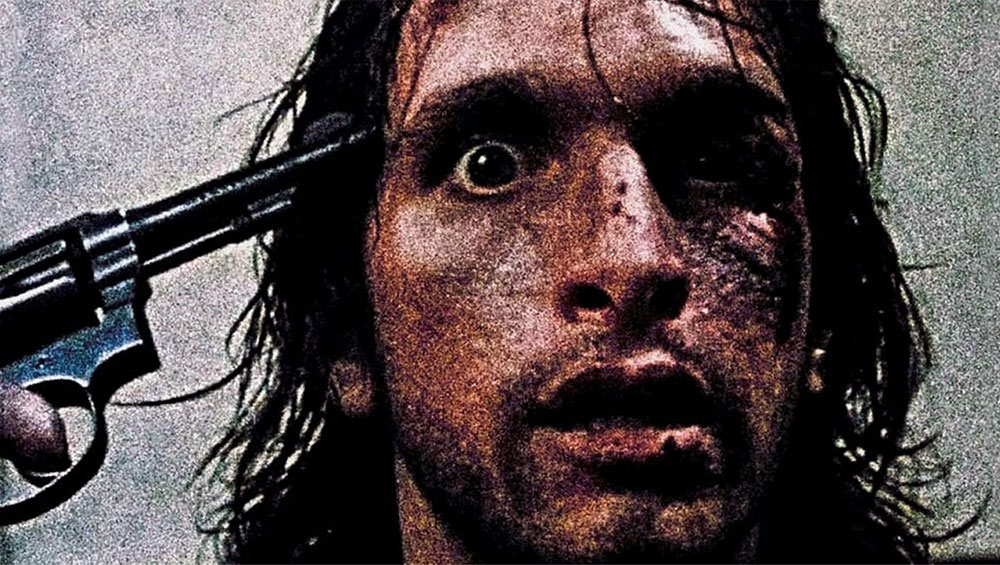Buddy Giovinazzo opens Combat Shock (1986), a Vietnam veteran exploitation drama, with tranquil images of nature before a soft-spoken narration kicks in. The result is a somber, rather beautiful, introduction to a film that was marketed as a machismo-heavy action film in line with the genre fare of its decade. On its surface, Giovinazzo’s film appears to share DNA with proudly exploitative films like James Glickenhaus’s The Exterminator (1980) and Richard C. Safarian’s Eye of the Tiger (1986), both action-heavy films that prominently feature Vietnam veterans who engage in violence upon returning to the United States. And, it’s unsurprising that the grassroots exploitation distribution company Troma—home to The Toxic Avenger (1984) and Class of Nuke ‘Em High (1986)—decided to advertise Combat Shock as though it were cut from the same cloth as Glickenhaus and Safarian’s escapist, testosterone-fueled carnage fantasies. After all, it was the Reagan ‘80s, when violence reigned at the box office and the Travis Bickles of the ‘70s gave way to the John Rambos of their day. Yet, for Giovinazzo, Combat Shock proved something singular: a delicately crafted character drama-cum-horror film, as much about the effects of war as it is about its affects. The film takes on the affected nature of glossy studio Vietnam narratives while reveling in many of its own noted excesses.
Short on narrative propulsion, Giovinazzo’s film concerns the post-Vietnam life of Frankie Dunlan (Ricky G): how he navigates poverty, drug use, constant nightmares, and the dangers of urban life in the 1980s. Despite being titled Combat Shock, there’s very little on-screen combat, albeit plenty of shock. The latter is due to the presence of Dunlan’s deformed baby, a ghoulish creature that isn’t far removed from the surreal and aberrant offspring from David Lynch’s Eraserhead (1977). Much of Combat Shock is unsettling, but each and every sequence involving the baby viscerally so, as the baby’s grotesque face fills the entire frame, existing as a potent, if not fantastic, aggressive consequence of circumstance. The child in Combat Shock isn’t the only similarity it shares with Lynch’s film either. Both films are grassroots, regional productions that retain an avant-garde integrity, consistent midnight movie appeal, and are embraced by genre fans. Where Eraserhead posits an ethereal space as a proxy for industrial squalor, Giovinazzo uses the decrepit locations of ‘80s New York, particularly Staten Island. The result is a pair of films that feel suitably apocalyptic in their portrayal of American domesticity within increasingly unpredictable, and often dangerous, urban spaces.
The original theatrical trailer for Combat Shock promises “fighting…killing…maiming” alongside images of intravenous drug use, the aforementioned child’s terrifying visage, and just about every explosion in the film. The result is a palpable exercise in grindhouse-era hucksterism, hoodwinking unassuming 42nd street audiences into witnessing the closest approximation to PTSD as cinema could realize at the time. Giovinazzo’s film isn’t without its exploitation merit; it is intentionally, if not proudly, a work of exploitation. Its exploration of violence isn’t dissimilar to that of Stanley Kubrick’s in his controversial adaptation of A Clockwork Orange (1971), as it finds a delicate balance between the juxtaposition of tawdry exploitation and its ramifications. Perhaps, in that sense, it’s the perfect film for a company like Troma: an acidic anti-war takedown trojan-horsed into theaters for the same audience that enjoyed Rambo: First Blood Part II the previous summer.
Combat Shock screens tonight, November 6, at Alamo Drafthouse Downtown Brooklyn on 35mm as part of the series “Weird Wednesday.”



